


Napoleonic Russians
von Peter's Prussians, Bavarians, Saxons and French all have an order of battle based on formations in the 1813 Army of the North or the French armies that fought them. It seemed perfectly natural to von Peter himself to likewise select the bulk of his Russian formations from amongst those Russians in the 1813 Army of the North. The inevitable kuirassiere brigade and grenadiers will need to be sourced from the Army of Bohemia ... because that's where they were located!
A little bit about Russian infantry ...
By way of explanation Russian infantry regiments consist of two battalions in the field - the first and third of the regiment. For the curious and/or ignorant the second battalion of a Russian infantry regiment is the depot battalion. The first battalion of a regiment is most obviously signified by having one white standard and one coloured standard. The third battalion gets two coloured standards.
By way of further explanation Russian Infantry battalions are made up of four companies with one being the elite company. This elite company was further divided into a grenadier - carabinier in the jager battalions - platoon and a strelki - light or marksman - platoon. In the Russian battalions of von Peter himself the grenadier/carabinier platoon proudly wear the tall black grenadier plume. The strelki wear a yellow or yellow & blue pompom. These elite platoons are - or at least should be! - shown on the right flank of the battalion for the grenadiers and the left for the strelki in the photos presented.
And by way of yet further explanation there has been some potential revision of some details of Russian infantry uniforms since von Peter himself settled on the paint scheme for his Russians. If von Peter himself has got his head around this his original research ends up being based on the publishings of Vislovatov. Unfortunately some of these publishings are now disputed by modern Russian historians. The details are maybe of interest to future Napoleonic Russian Army collectors but they are a bit off script to present here. But don't despair! von Peter himself is pleased to present the Revisions to Vislovatov's Russian Infantry Uniforms for the consumption of any who care.
Greater Queeg - aka Brent Watterson - is the official pigment applier for all things Napoleonic Russian for von Peter himself. The flags are from GMB Designs.
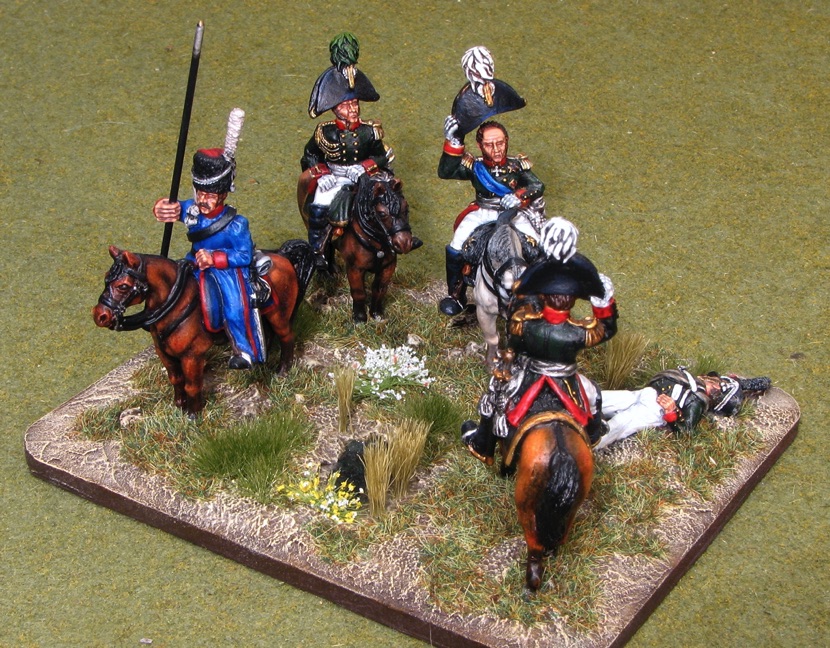
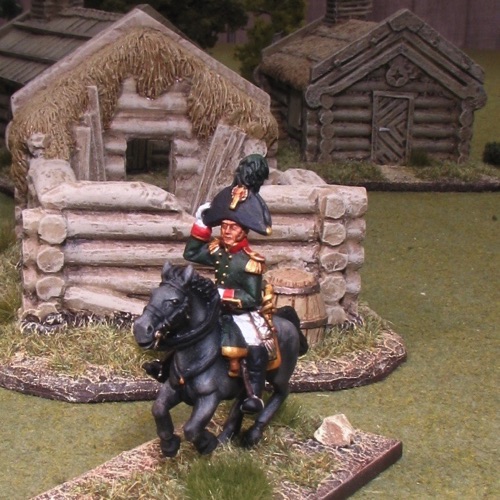
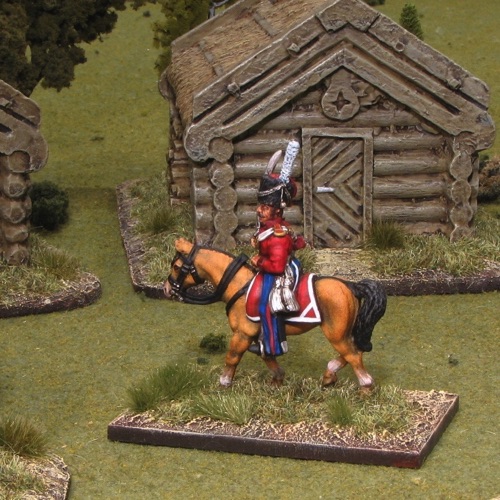
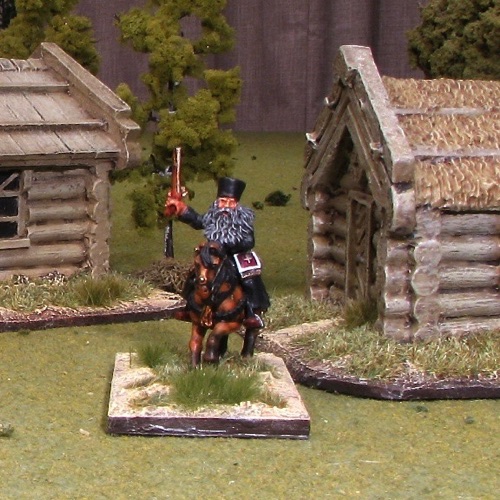
24th Division - Generalmajor Vuich
After an exhaustive selection process which meant reviewing not only the Russian divisions in the Army of the North but also the participation of those divisions in the 1812 campaign the 24th Division was adjudicated as selected. The 24th Division was part of Generallieutenant Winzingerode's Russian Corps. It is therefore with great pleasure that von Peter himself presents his Russian 24th Division circa 1813 as currently recruited.
Command of the division is with Generalmajor Vuich. He is doffing his bicorne to a senior officer who in turn is about to doff his own before reporting in. Vuich's ever present adjutant sits at his shoulder while a cossack scans the surroundings for any potential trouble. Unfortuately Grenadier Demitri is past caring about whatever may trouble the 24th Divison and its commander.
Being the great man that he is Generalmajor Vuich of course has a cast of supporting characters on his staff. A couple of well born officers have been persuaded to act as ADCs - one a senior officer and the second from the Garde Cossacks.
And then there is Father Disputin. A true fire and brimstone caretaker of the Lords flock who has come away from 1812 with feelings of incandescent hostility towards the heathen French ... ... ... and most all other foreigners as well! Not quite as well known as his infamous descendent Rasputin.
Brigade of Colonel Zwarikin
Colonel Zwarikn's Brigade consists of two regiments - the Chirvan and Oufa Infantry Regiments - each of two battalions.
The Colonel is assiduously observing the enemy leaving his Adjutant to deal with some overly excited officer. The Colonel & Adjutant are from Front rank Figurines and the overly excited officer from Wargames Foundry.
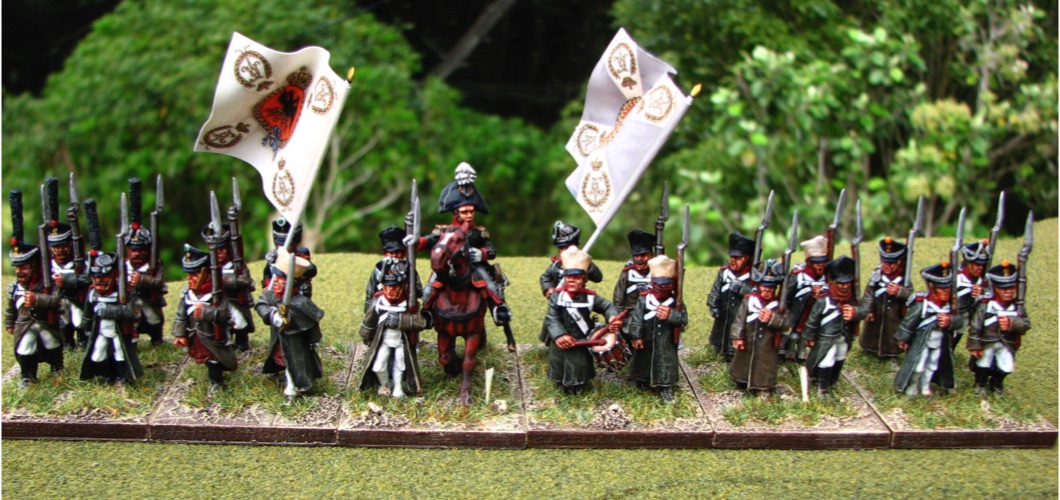
The Chirvan Infantry Regiment has light Grey coloured standards. The figures are from Wargames Foundry.
Brigade of Colonel Maznew
Colonel Maznew commands a line infantry regiment - the Bourtirky Infantry Regiment - and a jäger regiment - the 19th Jäger Regiment.
The Colonel and his Adjutant look on while an injured jäger from the 19th stoically returns to the battle.
Front Rank Figurines.
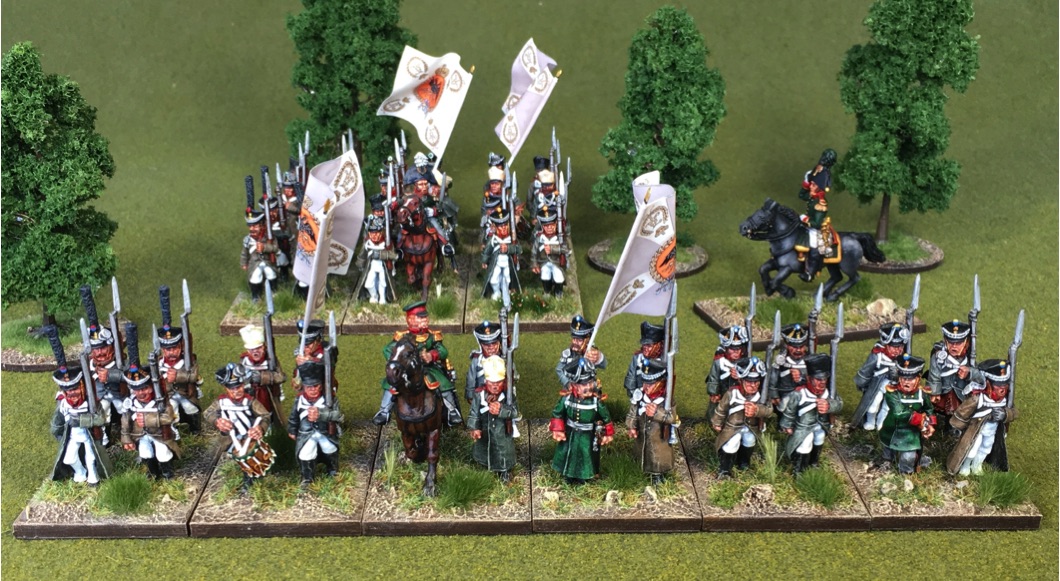
The 1/Oufa Infantry Regiment has Light Brown coloured standards. The figures are from Front Rank Figurines.
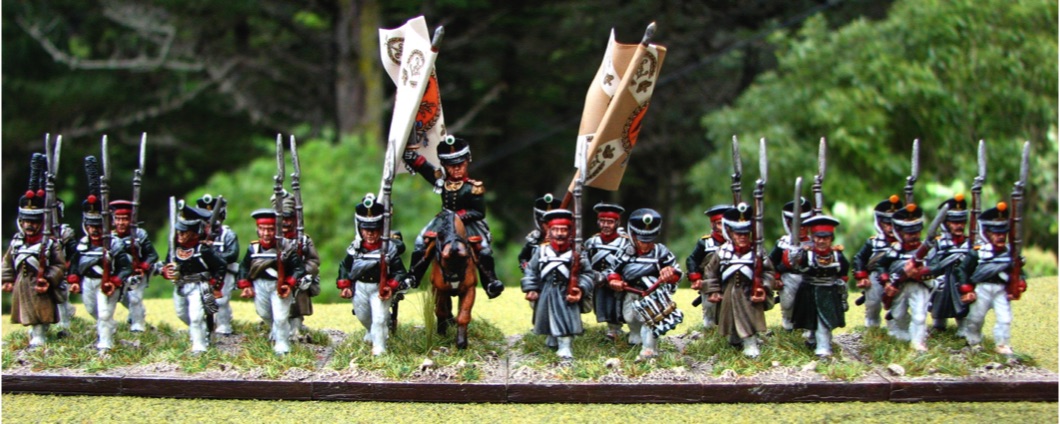
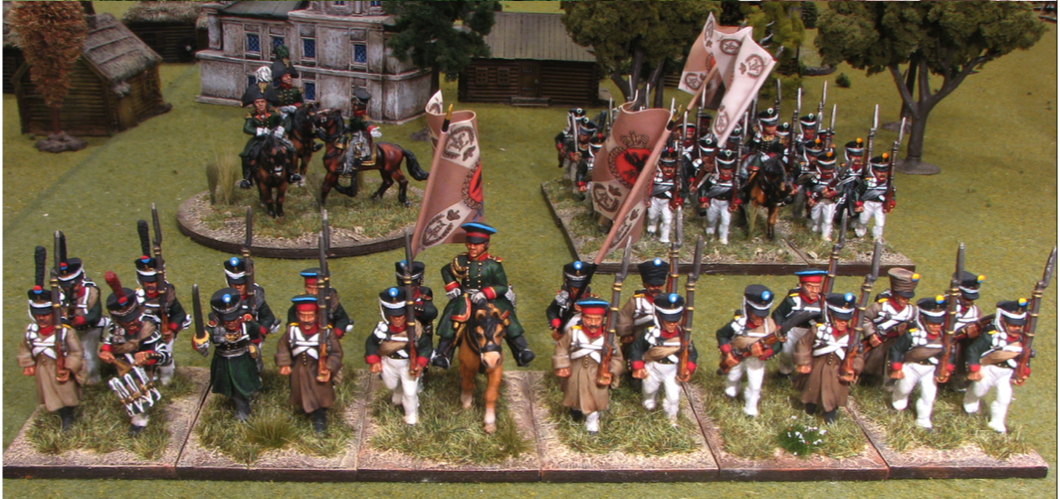
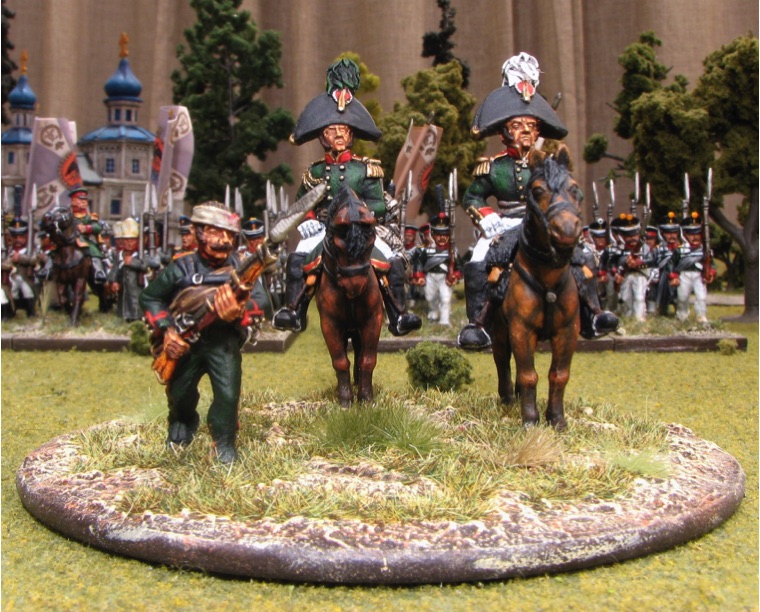
The Bourtirki Infantry Regiment has red, grey and white coloured standards.
The picture of the 1/Bourtirki Infantry regiment shows them supported by the Elizabethgrad Hussars and under the direct gaze if their divisional commander Generalmajor Vuich.
The third battalion has been purchased but not yet "pigmented". The figures are from Front Rank Figurines.
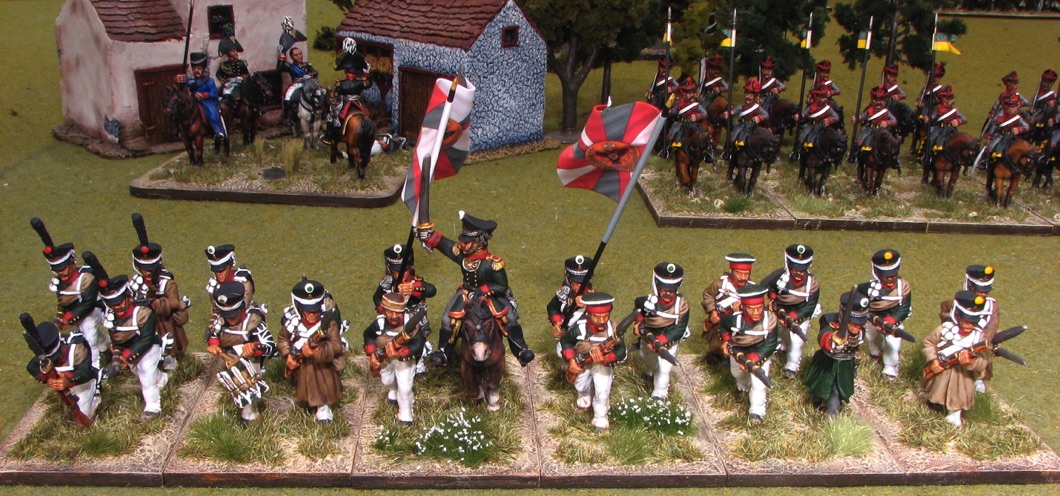
The 19th Jäger Regiment.
von Peter himself wanted his jägers in the green trousers worn as part of the winter uniform rather than the white of the summer uniform. Really the figures should be in short boots worn over the bottom of the trousers but that's not how the figures came. Obviously something unique to the 19th Jägers! Perhaps that are awaiting on their boots to arrive?!
The figures are all Front Rank Figurines.
The image of the 1/19th Jäger shows them in action in the yellowy light of twilight. They are posted in front of Colonel Zwarikin's Brigade somewhere in Central Germany 1813.
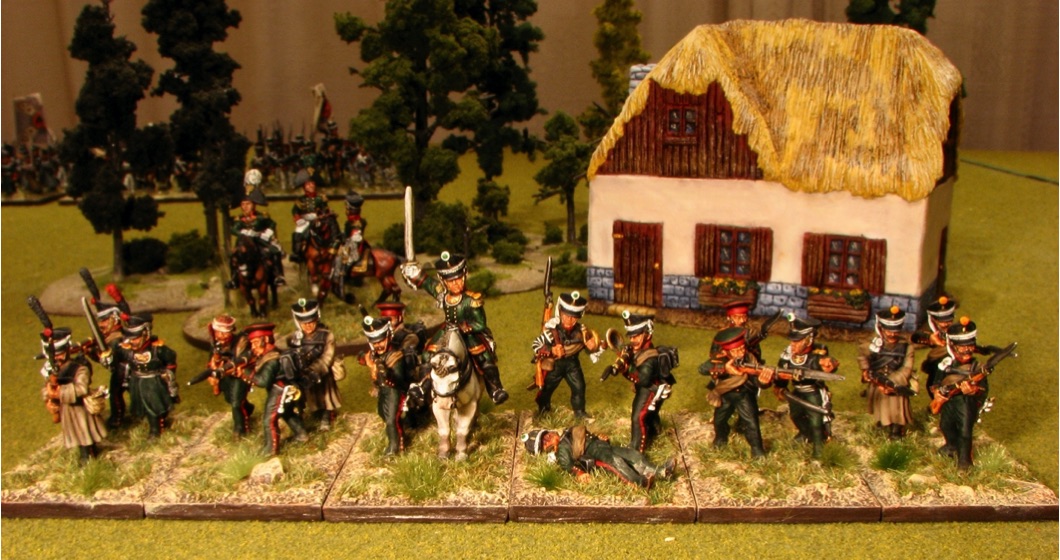
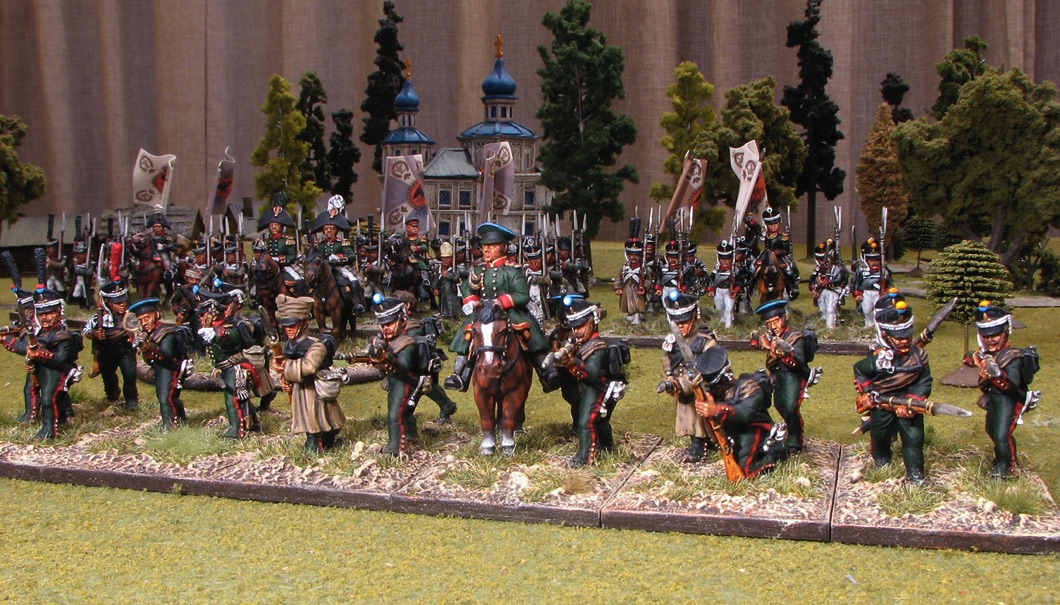
The image of the 3/19th Jäger Regiment comes from the bitter fighting of 1812 in Russia. Once again the unit is shown to the front of Colonel Zwarikin's Brigade.
The picture of the 3/Oufa Infantry regiment shows them in line supported by the 1/Oufa IR in column whilst Colonel Zwarikin keeps a critical eye on proceedings.
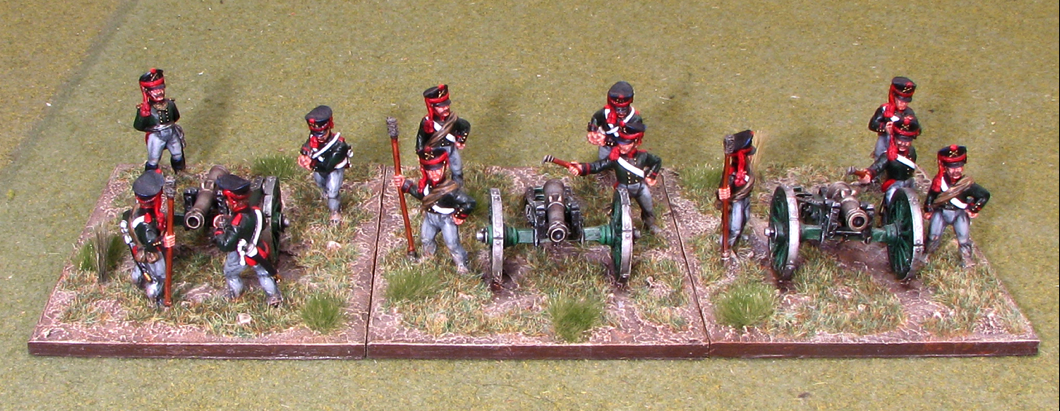
24th Division: Artillery
The Russians always seemed to have copious amounts of artillery. And whereas most nations organised their batteries with either six or eight artillery pieces the Russians organised theirs with twelve. No messing about!!
The Light Battery #46 was assigned to the 24th Division. It consisted of eight 6 pounder cannon and four 10 pounder licornes. Licornes were a Russian invention and were a cross between a cannon and a howitzer.
Because of their larger size von Peter himself represents a Russian battery with three artillery pieces. The licorne is on the right in the image below. It has a shorter barrel than the two accompanying cannons.
Front Rank Figurines.
Cavalry Brigade: Generalmajor Manteufel
Also serving in Generallieutenant Winzingerode's Russian Corps was the Cavalry Brigade of Generalmajor Manteufel - the celebrated St. Petersburg Dragoon Regiment and the Elizabethgrad Hussars.
The Generalmajor steadies his rearing horse whilst shouting at an accompanying officer from the St. Petersburg Dragoons. A senior officer grabs a hold of his brand new bicorne as he anticipates an imminent period of rapid travel. Truly it is the devil's own work to get hold of a decent bicorne out here. Especially when there's a war on! The hussars and dragoons of the brigade look on.
Front Rank Figurines.
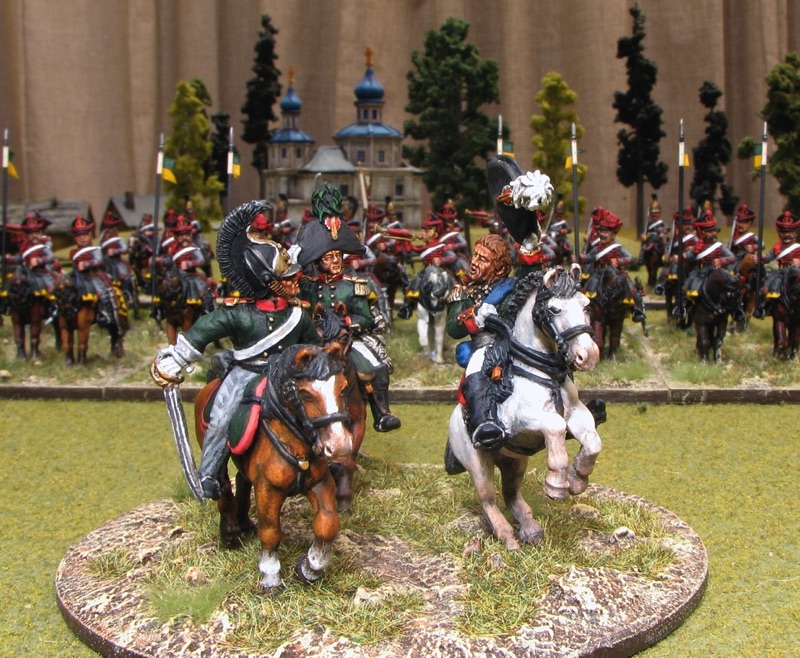
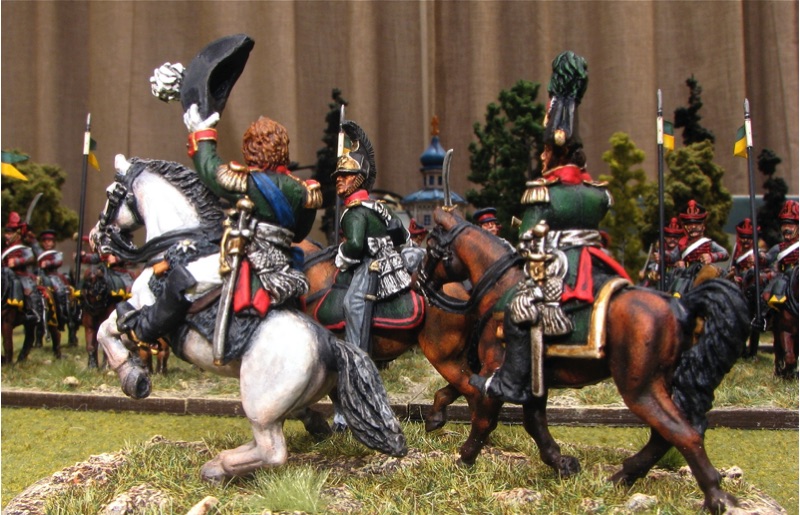
Cossack Brigade: Generalmajor Illowaiski IV
Generalmajor Illowaiski IV's cossacks also served as part of Generallieutenant Winzingerode's Russian Corps.
The main man should really be wearing a blue coat but for some reason von Peter himself took it upon himself to specify a green coat to differentiate him from General/Hetman Platov whom the casting is meant to represent. Not the best call ever made! The ceremonial mace is possibly a no no as well!
General Illowaiski IV is accompanied by his Adjutant is also supported by a Cossack of the Garde Officer resplendent in his red.
Figures from Front Rank Figurines.
As per all Russian hussar and uhlan regiments the Elizabethgrad Hussar Regiment had a much larger establishment - 8 squadrons plus 2 depot squadrons - than the kuirassieres and dragoons - 4 squadrons plus 1 depot squadron. During the Seven Years War such large cavalry regiments were operationally split into two "battalions" and while von Peter himself is not sure that this tradition continued into Napoleonic times it is certainly not beyond the bounds of belief. And anyway it suits von Peter himself to represent his Russian hussars as two regular sized cavalry units. Of course in the end there are 24 hussar figures that can be used however is required on the day.
Wargames Foundry figures.
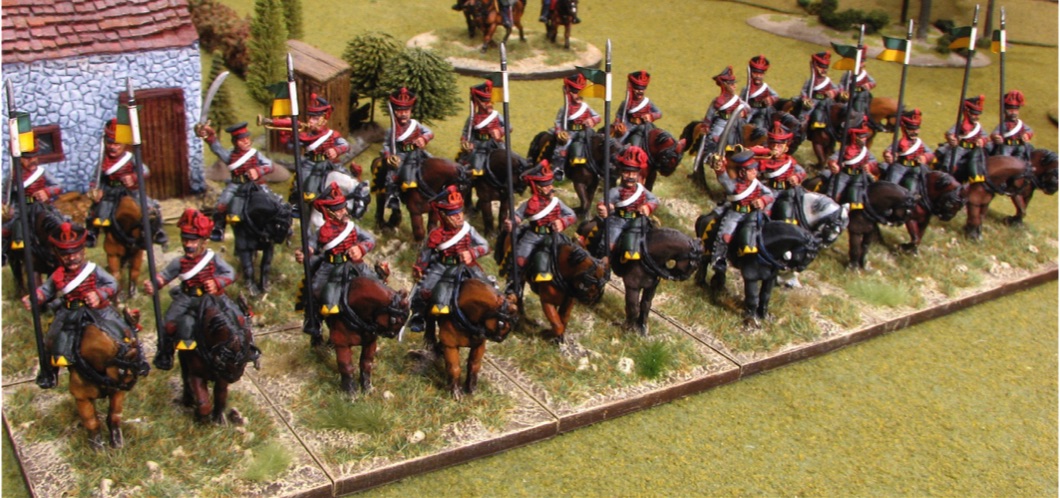
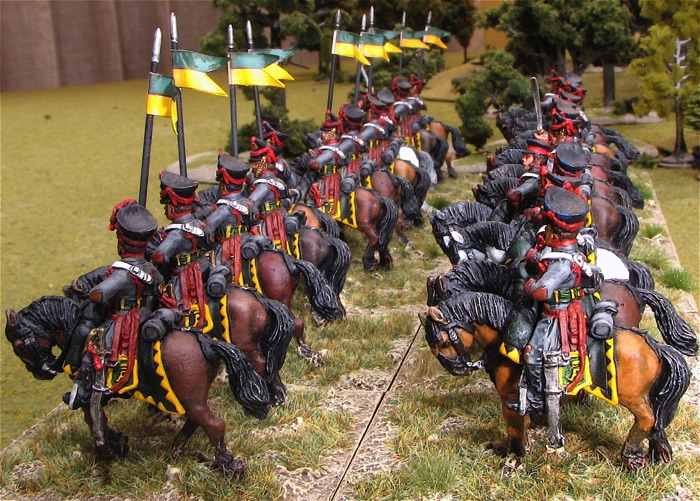
The St. Petersburg Dragoons were a celebrated unit in the Russian Army reputedly capturing 4 French colours during the Napoleonic Wars ...
1. 20th November 1805 Colour (Eagle?) of the 1st squadron of the 11th Dragoon Regiment captured at Raussnitz.
2. In February 1807 the dragoons crossed a frozen lake near Eylau and fell on the left flank of the 18th Line Infantry and captured the Eagle and a colour of the 2nd Battalion of 18th Line Regiment.
3. On next day the eagle and colour of the 1st Battalion of 44th Line Regiment.
4. In 1812 at the Berezina the dragoons captured a Colour of the 14th Cuirassier Regiment.
Wargames Foundry figures.
I really need to get a photo of this illustrious regiment with the correct commander in shot!
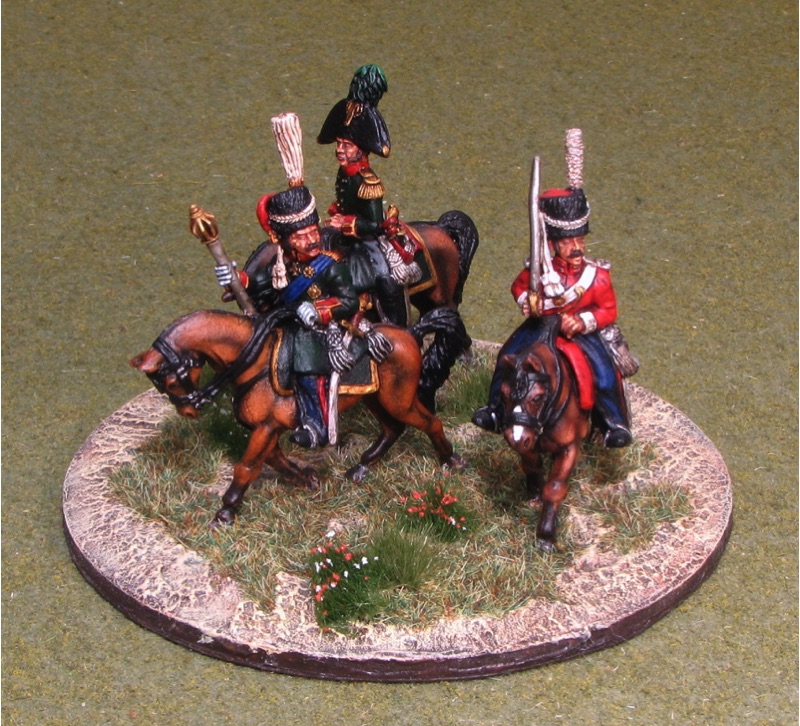
Reserve: Infantry
The reserve infantry for the Russians of von Peter himself will be provided by a brigade of good solid Russian grenadiers. Though there were grenadiers in Generallieutenant Winzingerode's Russian Corps they were of the combined grenadier variety and perhaps not quite as good and solid as those from the Grenadier Regiments. So the call went out to the 3rd (Grenadier) Corps from the Army of Bohemia and the result was Colonel Act's Brigade comprising the St. Petersburg Grenadier Regiment and the Tauride Grenadier Regiment.
For those not in the know - the Russian combined grenadier battalions of 1813 were constructed using the grenadiers from the 2nd (depot) battalions of the infantry regiments. They were creations of expediency with perhaps diminished esprit de corps due to their temporary nature. Worse they probably didn't have any flags!
Pictured circa 1812 in Russia Colonel Acht - dressed as a general! - sits regally on his horse with his Adjutant in attendance. Two accompanying grenadier officers are a little more animated.
Front Rank Figurines except for the mounted grenadier officer - in the shako with the tall black plume - who is from from Wargames Foundry.
Reserve: Cavalry
The grand plan is to have a brigade of Kuirassieres. The figures for the two regiments and their command have been safely procured ... but from there the story is not so good. Only the command have been completed with the regiments firmly stuck in the unpigmented pile. Sob!
Generalmajor Karatiev commands the Kuirassiere Brigade. He is receiving the acclimation of an officer from one of the regiments in the brigade - the Ekaterinoslav Kuirassiere Regiment. The Generalmajor raises his hat in return whilst the accompanying senior officer touches his own.
Front Rank Figurines provided the figures.
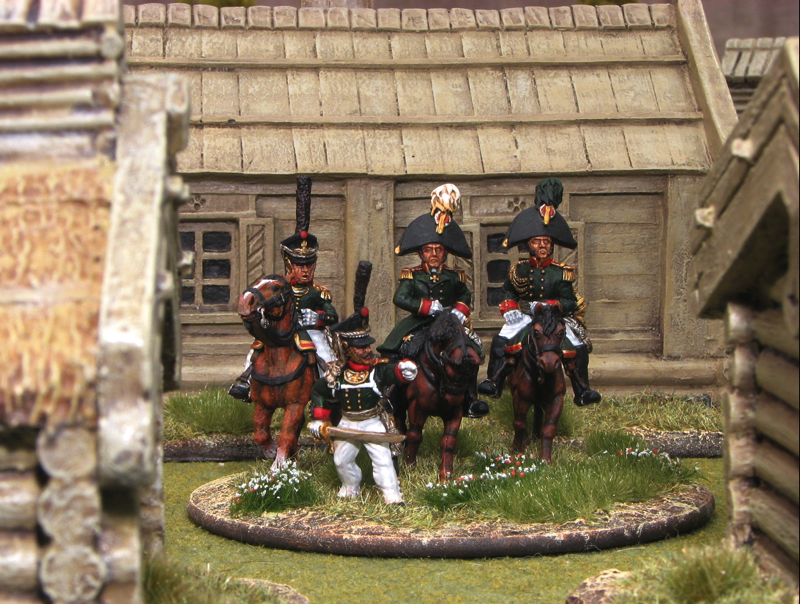
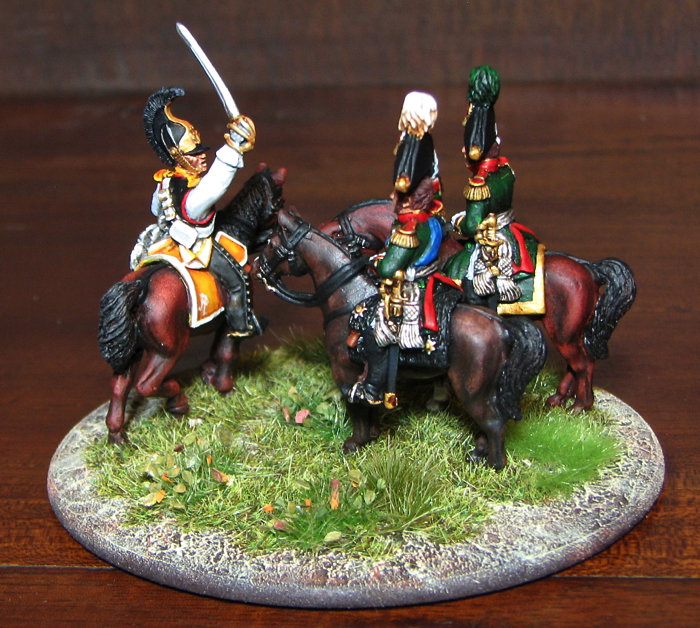
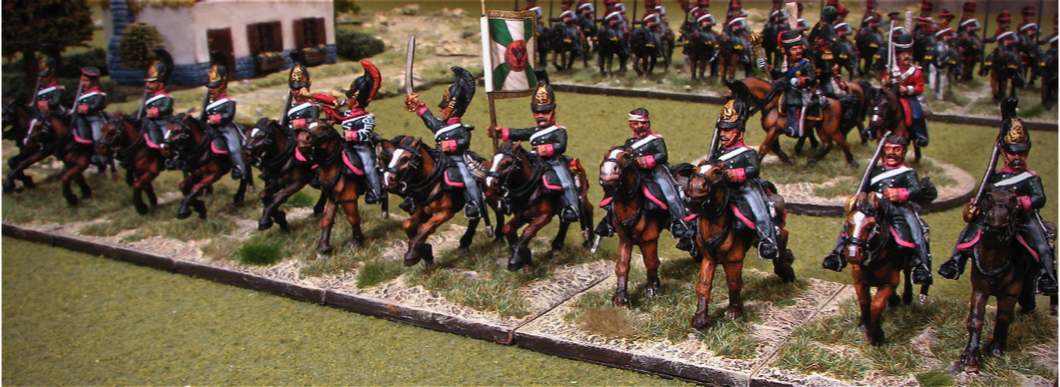
The 3/Oufa Infantry Regiment with the first battalion in support. The arrival of a representative of the high command might presage a slightly more energetic day!
The figures are from Wargames Foundry excepting the member from the staff who is sourced from Front Rank Figurines.
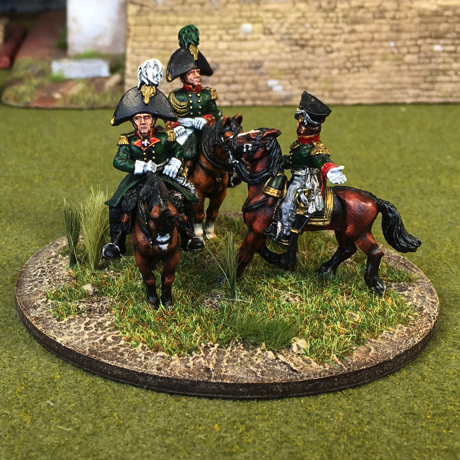
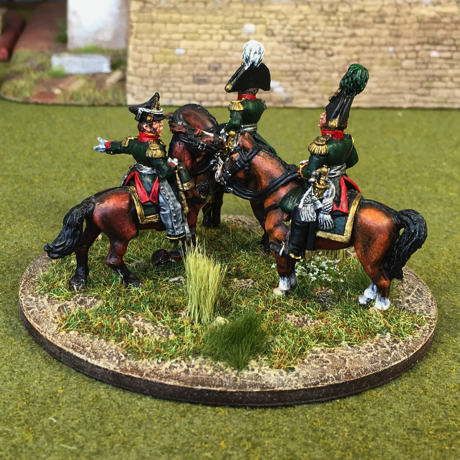
The more eagle eyed of the readers will have noticed that the front rank of the hussars are armed with lances. Is there some confusion or error here? Errr ... no! How could you think such untrusting thoughts?! In January 1812 the Russian War Minister M B Barclay de Tolly directed the Tula Arms Factory to make 5920 lances of which 5120 were for the hussar regiments. The front rank of the hussars were to be lance equipped. For the curious see Arming Hussars with Lances.